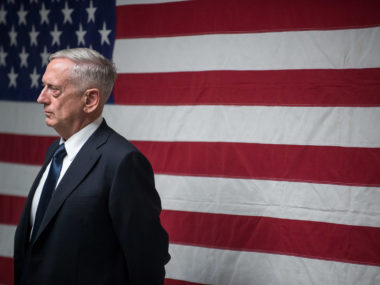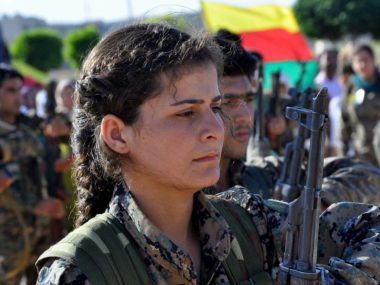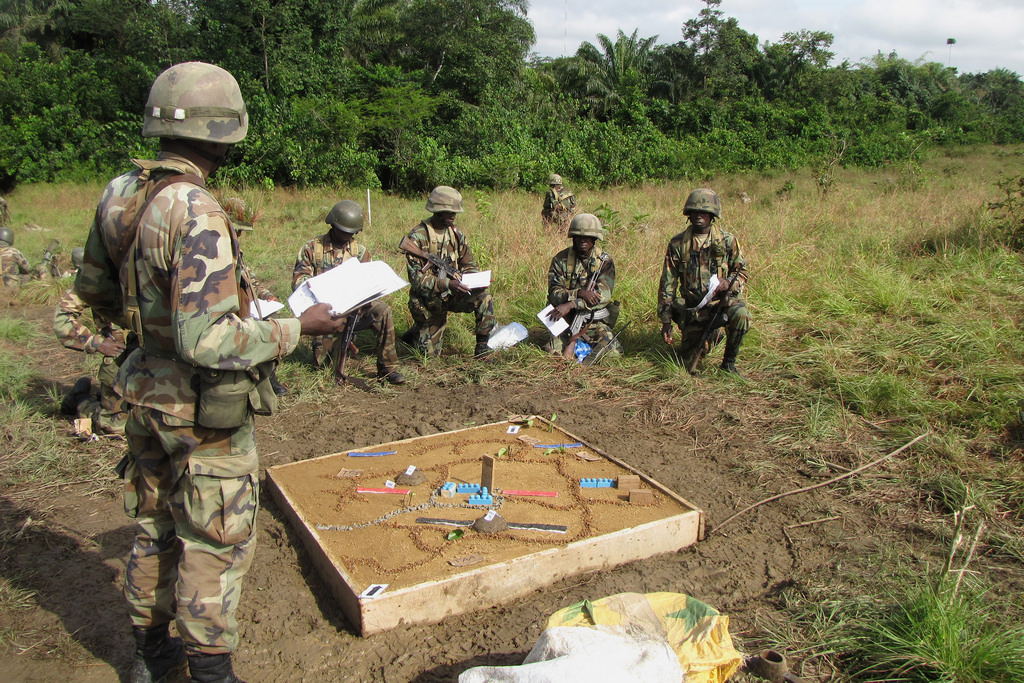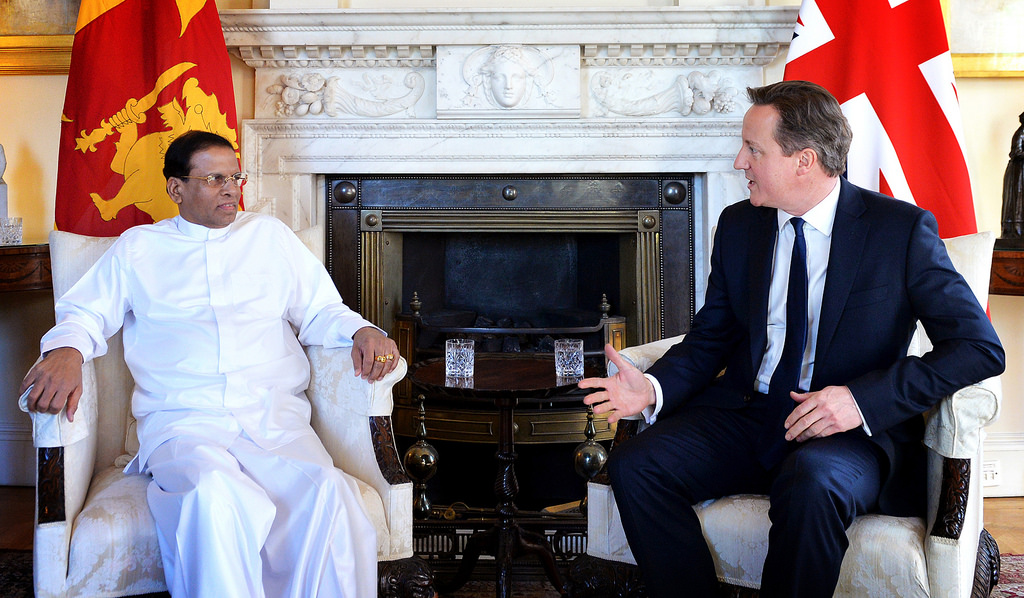Guest post by Jonathan Bate.
The military and the academy need each other, at least when it comes to enhancing our understanding of war. While programs such as the Minerva Initiative provide critical funding for research in the academy, the 2014 dissolution of the Human Terrain System – a program which embedded anthropologists, sociologists, and other scholars with US military units – reveals the ongoing need to foster more meaningful collaboration between the military and academia.
Critically, the relationship offers mutual benefits for both groups. On one hand, the Department of Defense has the opportunity to tap into a vast pool of intellectual and methodological talent at little cost. Likewise, social scientists – whether they are empiricists or theorists – can receive approved data to fuel studies which may provide invaluable insights into the workings of conflict. Additionally, closer collaboration can increase researchers’ understanding of how the military operates and hence aid the development of useful and relevant research questions. Furthermore, DoD can deepen its understanding of population-centric conflict and improve the effectiveness of its overseas stability operations through a stronger partnership with the social science research community.
In this new report for the Modern War Institute at the US Military Academy at West Point, I propose an evidence-driven approach to stability operations – via what I term “tactical economics” – which would require the military to learn more from academia in three key areas:
The US military faces an “evaluation gap” in regard to population-centric operations.
In their book Poor Economics, Banerjee and Duflo propose that the development community has struggled to reduce global poverty because it does not adequately understand the subject and its root causes. The same may be true with population-centric conflict; the military has struggled due to an inadequate understanding of the effects of military interventions on the human dimension. Notably, despite billions of dollars spent to stabilize Iraq and Afghanistan, we know little about the causal effects regarding many programs, including the Commander’s Emergency Response Program (CERP). In short, our military suffers from an “evaluation gap” similar to that identified by the international development community a decade ago.
What limited analysis has occurred, such as the 2013 study “Modest, Secure, and Informed: Successful Development in Conflict Zones,” reveals the potential benefits from this kind of research. Berman, Felter, and Shapiro used the 2007 Iraq surge as a “natural experiment” to identify the causal effects of CERP projects. They found that small projects reduced violence, whereas large reconstruction projects had no violence-reducing effect. Such insight is critical in guiding DoD’s employment of budget-constrained economic programs during stability operations in the wake of future decisive action.
Social science can enable tactical ground forces to assess stability operations with impact evaluations.
Empirical evaluation methods would allow DoD to better understand the nature of population-centric conflict. The array of analytical tools provided by the recent “credibility revolution” in empirical social science should be embraced wholeheartedly by military leadership. However, the missing link is a working relationship between tactical leaders and social scientists. A shared interest in unraveling the murky factors driving conflict provides an impetus for this dynamic partnership. US ground forces have access to violent regions where they can generate unclassified data and help address the data collection problem in “hot” conflict zones (an issue highlighted by Blattman and Miguel). The social science research community possesses expertise in cutting-edge evaluation techniques, thereby enabling rigorous data analysis from tactical units at the front line of population-centric conflict.
Cross-Cutting Collaboration is Key
Collaboration requires networked, multi-tiered relationships between tactical leaders and researchers. Expanding civilian graduate education opportunities for military leaders can place them in proximity to social scientists where these connections can occur. Increased research grants for social scientists can formalize these bonds and provide a vital “reach-back” capability. Exposing tactical leaders to the power of impact evaluations, while also providing focused data access to researchers, can dramatically increase the learning power of military deployments and spark a “credibility revolution” in stability operations.
Social scientists were critical of previous programs such as HTS because of the perception that their field of expertise might be militarized or their research misused. They questioned the ethics and objectivity of an empiricist embedding themselves with a military unit. There were also concerns of waste, fraud, and mismanagement. But as we wind down our wars in Iraq and Afghanistan, now more than ever there is a need for greater evidence-based evaluation of our interventions to improve reconstruction efforts and stability operations. As such, the military should make efforts to address the concerns of social scientists such that both sides are able to realize the mutual benefits of greater collaboration in the years ahead.
Jonathan Bate is an active duty US Army officer, an economics instructor in the Department of Social Sciences at West Point, and a scholar with the Modern War Institute. He has deployed to Afghanistan three times in support of Operation Enduring Freedom.
* The views expressed herein are those of the author and do not reflect the position of the United States Military Academy, the Department of the Army, or the Department of Defense.








5 comments
Close collaboration between military and social scientists is one important factor in developing and delivering effective and efficient post-conflict reconstruction projects. As the author Jonathan Bate rightly notes, both sides would benefit from this partnership. Moreover, using this data and analysis may help conducting cross-country comparative assessments, to inform policy and future programmatic work.
However, there are ethical and practical issues related to short- or long-term deployment of researchers and evaluators in volatile, insecure field environments. One solution is using the cadre of international development professionals with relevant background and expertise, as a link between the field-based military and the home-based research centers. Many of them hold PhD degrees and have years of work in academia before joining the international development practice area. They are better equipped to cope with limitations and pressures of such environments, along with practical experience of collecting information in insecure setting, at times using remote monitoring methods, etc.
Their role may vary depending on the circumstances of particular locality and the partnership arrangements. For example, in a limited format, they would be collecting and processing information (especially related to interviews, focus groups and other methods feeding into qualitative analysis) to be then transferred to home-based scientists or research centers for the final assessment and reporting.
In a more expanded mode, a team of field-deployed professionals may complete most of the work right on the spot (which would be convenient given that they would be available for advice during the implementation). Otherwise, the military may opt to contract consultancy firms specializing in monitoring and evaluation of international development projects (they are usually contractors of USAID and other agencies and donors).
Close collaboration between military and social scientists is one important factor in developing and delivering effective and efficient post-conflict reconstruction projects. As the author Jonathan Bate rightly notes, both sides would benefit from this partnership. Moreover, using this data and analysis may help conducting cross-country comparative assessments, to inform policy and future programmatic work. However, there are ethical and practical issues related to short- or long-term deployment of researchers and evaluators in volatile, insecure field environments.
One solution is using the cadre of international development professionals with relevant background and expertise, as a link between the field-based military and the home-based research centers. Many of them hold PhD degrees and have years of work in academia before joining the international development practice area. They are better equipped to cope with limitations and pressures of such environments, along with practical experience of collecting information in insecure setting, at times using remote monitoring methods, etc.
Their role may vary depending on the circumstances of particular locality and the partnership arrangements. For example, in a limited format, they would be collecting and processing information (especially related to interviews, focus groups and other methods feeding into qualitative analysis) to be then transferred to home-based scientists or research centers for the final assessment and reporting.
In a more expanded mode, a team of field-deployed professionals may complete most of the work right on the spot (which would be convenient given that they would be available for advice during the implementation). Otherwise, the military may opt to contract consultancy firms specializing in monitoring and evaluation of international development projects (they are usually contractors of USAID and other agencies and donors).
It is all about the assessments. Those who can conduct accurate and thorough assessments are worth their weight in gold. Of course those who pay attention to assessments and use them in strategy development and campaign planning are themselves golden. We should not forget the inherent responsibility the military has for conducting area study/area assessment, target audience analysis, and civil information management.
We should consider our own history with the Special Operations Research Office:
SORO The American University
http://www.worldcat.org/identities/lccn-n88-627995/
https://en.wikipedia.org/wiki/Project_Camelot